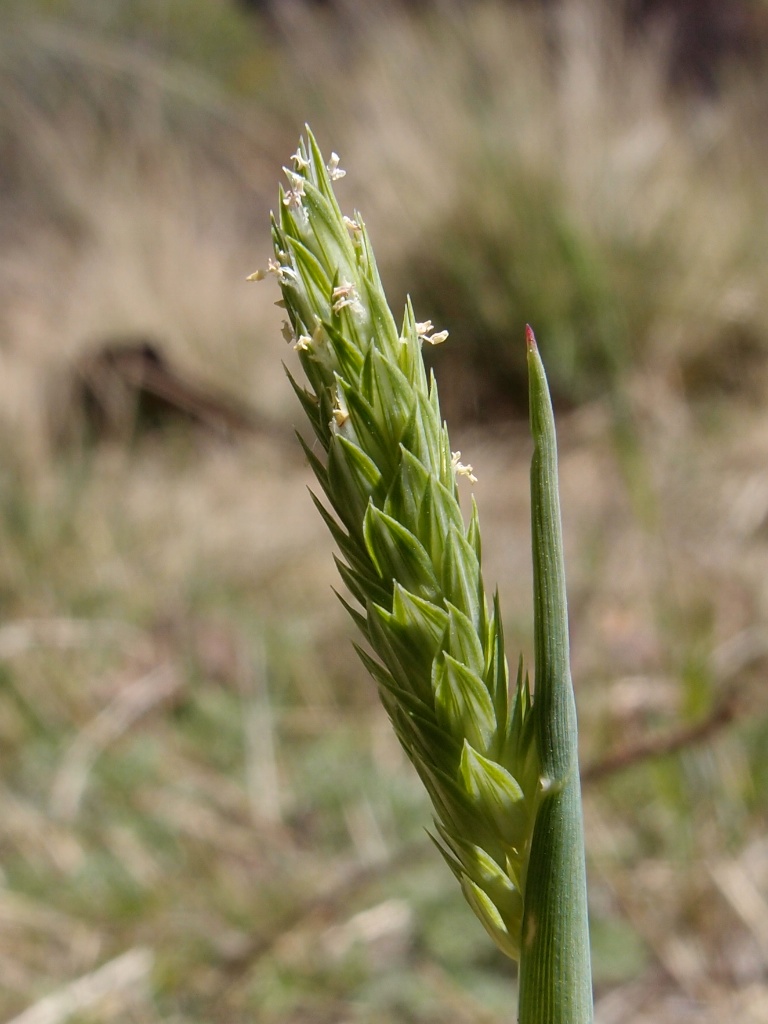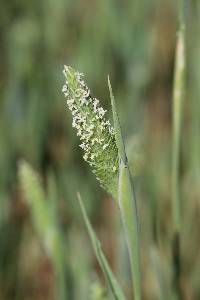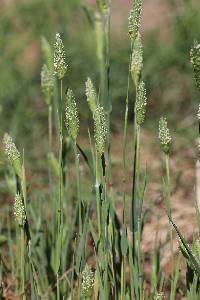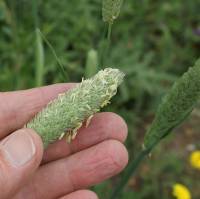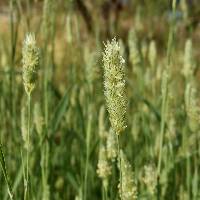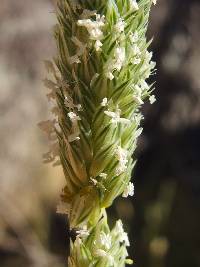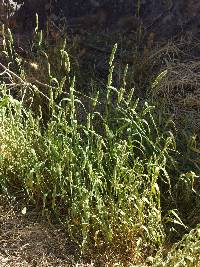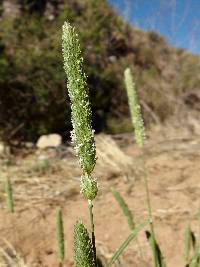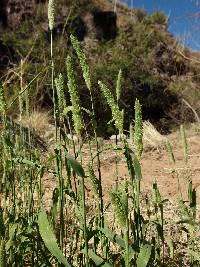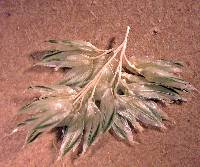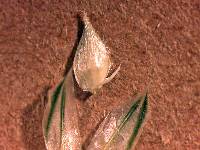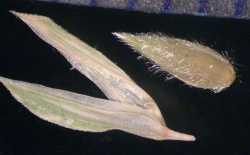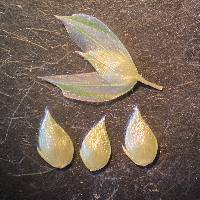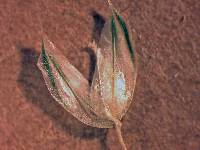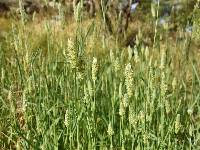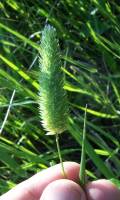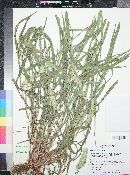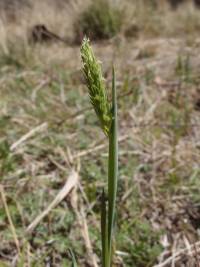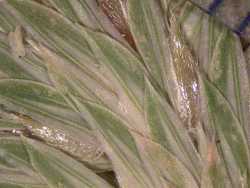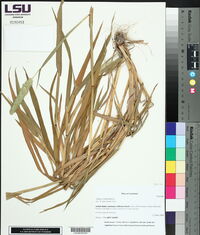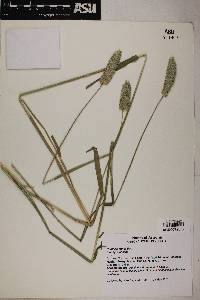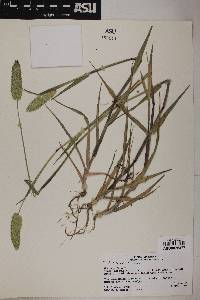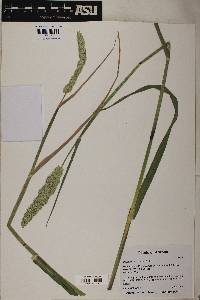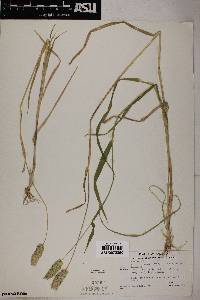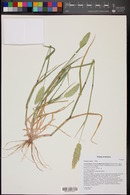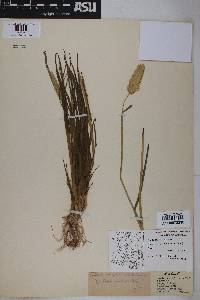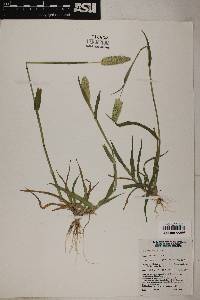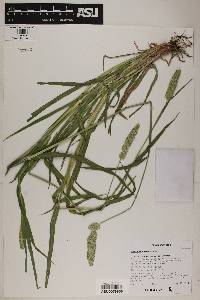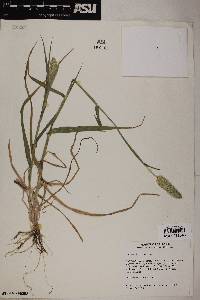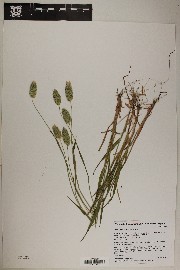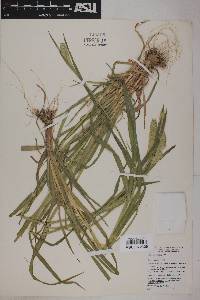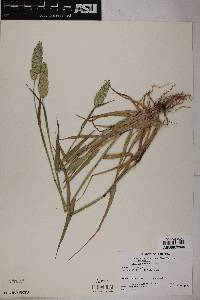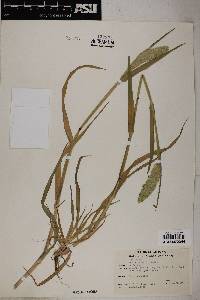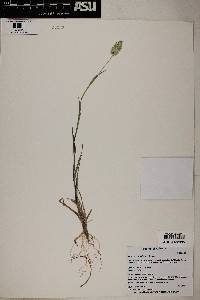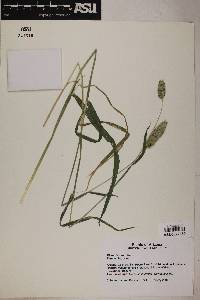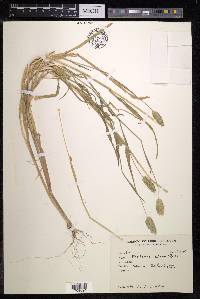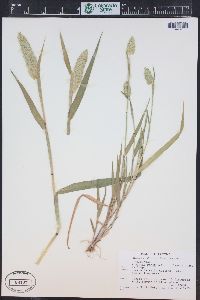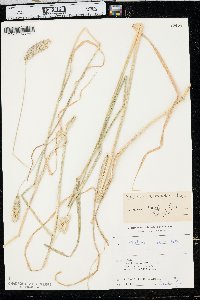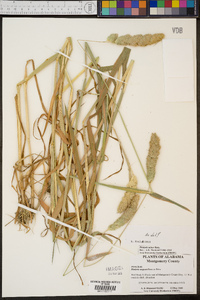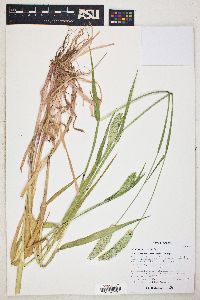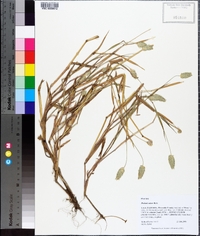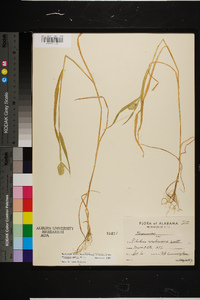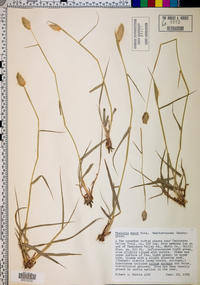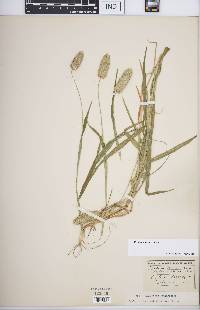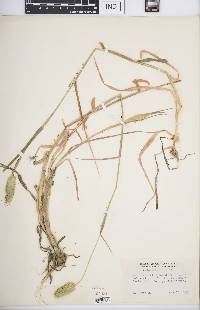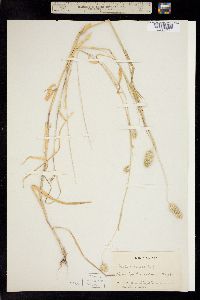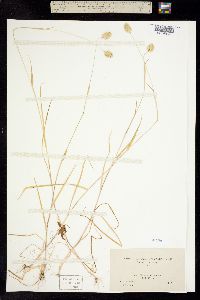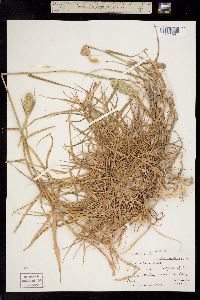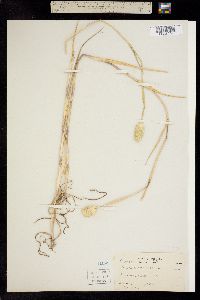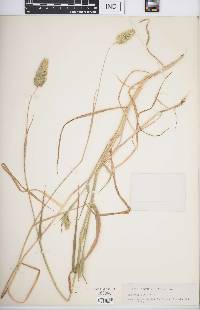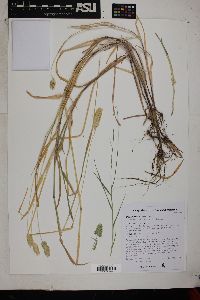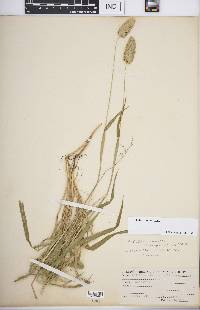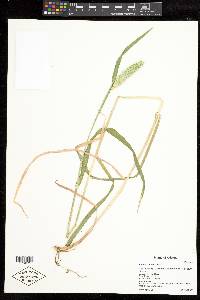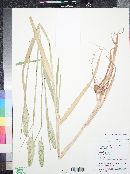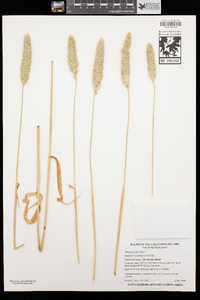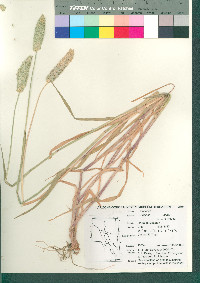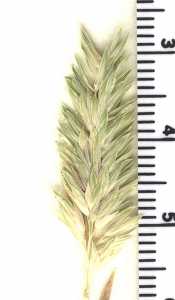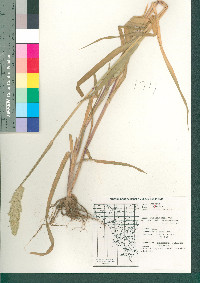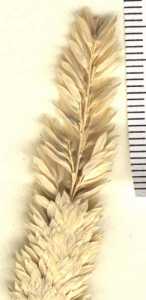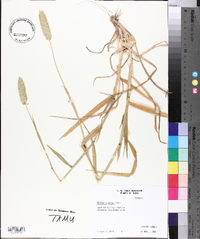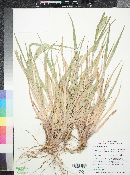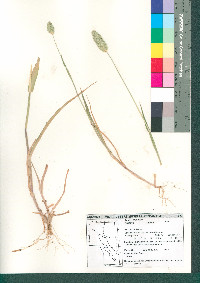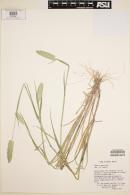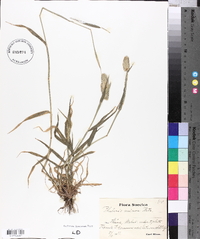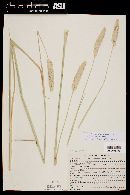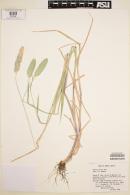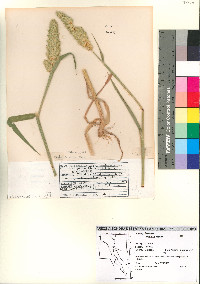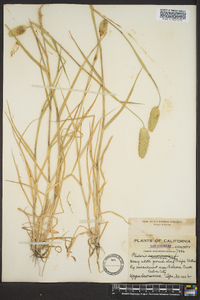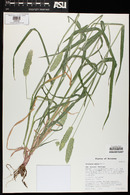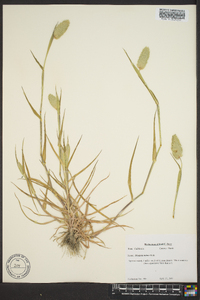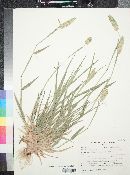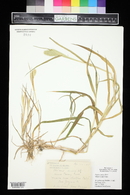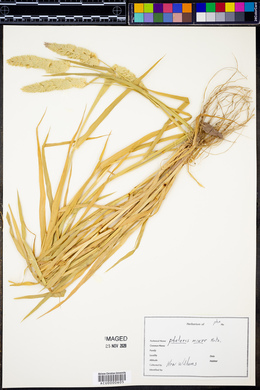Phalaris minor
|
|
|
|
Family: Poaceae
Lesser Canary Grass, more...littleseed canarygrass, littleseed canary grass, canarygrass, Lesser Canarygrass
[Phalaris ambigua Fig. & De Not., morePhalaris aquatica var. minor , Phalaris arundinacea var. minor (Retz.) Paunero, Phalaris brevis Trin., Phalaris capensis Thunb., Phalaris decumbens Moench, Phalaris gracilis Parl., Phalaris haematites Duval-Jouve & Paris, Phalaris haematites var. granulosa Sennen & Mauricio, Phalaris mauritii Sennen, Phalaris minor f. bracteata Jansen & Wacht., Phalaris minor f. composita Jansen & Wacht., Phalaris minor f. glomerata Henrard ex Jansen & Wacht., Phalaris minor f. gracilis (Parl.) Asch. & Graebn., Phalaris minor f. haematites Duval-Jouve & Paris ex Trab., Phalaris minor f. subcylindrica Web. & Thell. ex Jansen & Wacht., Phalaris minor subsp. gracilis (Parl.) Arcang., Phalaris minor var. comosula Heldr., Phalaris minor var. genuina Maire & Weiller, Phalaris minor var. gracilis (Parl.) Parl., Phalaris minor var. haematites Duval-Jouve & Paris, Phalaris minor var. integra Trab., Phalaris minor var. nepalensis (Trin.) Bor, Phalaris minor var. phaeosperma Cavara, Phalaris nepalensis Trin., Phalaris trivialis Trin.] |
Plants annual. Culms 10-100 cm, not swollen at the base. Ligules 5-12 mm, truncate to rounded, often lacerate; blades 3-15 cm long, 2-10 mm wide, smooth, shiny. Panicles 1-8 cm long, 1-2 cm wide, dense, ovoid-lanceoloid, truncate to rounded at the base, rounded apically, the spikelets borne individually, not clustered. Spikelets homogamous, all spikelets with a bisexual floret; florets 2; disarticulation above the glumes, beneath the sterile florets. Glumes 4-6.5 mm long, 1.2-2 mm wide, keels winged distally, wings 0.3-0.5 mm wide,irregularly dentate or crenate, occasionally entire, varying within a panicle, lateral veins conspicuous, smooth; sterile florets 1, 0.7-1.8 mm, linear, glabrous or almost so; bisexual florets 2.5-4 mm long, 1.2-1.8 mm wide, pubescent, dull yellow when immature, becoming shiny gray-brown at maturity, acute to somewhat acuminate; anthers 1-2 mm. 2n = 28, 29. Phalaris minor is native around the Mediterranean and in northwestern Asia, but is now found throughout the world. Even where it is native, it usually grows in disturbed ground, often around harbors and near refuse dumps. Although it has been found at numerous locations in the United States, it is only established in the southern portion of the Flora region. The compact panicle with its truncate to rounded base and the rather variable edges of the glume wings usually distinguish Phalaris minor from other species in the genus. Dr. David Bogler, USDA NRCS PLANTS Database Annuals, Terrestrial, not aquatic, Stems nodes swollen or brittle, Stems erect or ascending, Stems geniculate, decumbent, or lax, sometimes rooting at nodes, Stems caespitose, tufted, or clustered, Stems terete, round in cr oss section, or polygonal, Stem internodes hollow, Stems with inflorescence less than 1 m tall, Stems, culms, or scapes exceeding basal leaves, Leaves mostly cauline, Leaves conspicuously 2-ranked, distichous, Leaves sheathing at base, Leaf sheath mostly open, or loose, Leaf sheath smooth, glabrous, Leaf sheath and blade differentiated, Leaf blades linear, Leaf blades 2-10 mm wide, Leaf blades 1-2 cm wide, Leaf blades mostly flat, Leaf blades mostly glabrous, Ligule present, Ligule an unfringed eciliate membrane, Inflorescence terminal, Inflorescence a dense slender spike-like panicle or raceme, branches contracted, Inflorescence solitary, with 1 spike, fascicle, glomerule, head, or cluster per stem or culm, Inflorescence densely corymbose, paniculate, or capitate, rays reduced or absent, Inflorescence spike ovoid, lanceolate, or oblong, not more than twice as long as wide, Inflorescence single raceme, fascicle or spike, Flowers bisexual, Spikelets pedicellate, Spikelets laterally compressed, Spikelet less than 3 mm wide, Spikelets with 3-7 florets, Spikelet with 1 fertile floret and 1-2 sterile florets, Spikelets solitary at rachis nodes, Spikelets all alike and fertille, Spikelets bisexual, Spikelets disarticulating above the glumes, glumes persistent, Rachilla or pedicel glabrous, Glumes present, empty bracts, Glumes 2 clearly present, Glumes equal or subequal, Glumes equal to or longer than adjacent lemma, Glume equal to or longer than spikelet, Glumes keeled or winged, Glumes 1 nerved, Glumes 3 nerved, Lemma coriaceous, firmer or thicker in texture than the glumes, Lemma becoming indurate, enclosing palea and caryopsis, Lemma 5-7 nerved, Lemma body or surface hairy, Lemma apex acute or acuminate, Lemma awnless, Lemma margins thin, lying flat, Lemma straight, Palea present, well developed, Palea about equal to lemma, Palea longer than lemma, Palea 2 nerved or 2 keeled, Stamens 3, Styles 2-fid, deeply 2-branched, Stigmas 2, Fruit - caryop sis, Caryopsis ellipsoid, longitudinally grooved, hilum long-linear.
FNA 2003, Gould 1980 Common Name: littleseed canarygrass Duration: Annual Nativity: Non-Native Lifeform: Graminoid General: Introduced annual grass; stems 10-100 cm long, geniculate and branching at base. Vegetative: Blades 3-15 cm long, 2-10 mm wide, smooth, shiny; ligules 5-12 mm, truncate to rounded, often lacerate. Inflorescence: Panicle 1-8 cm tall, 1-2 cm wide, dense, ovoid-lanceoloid, well exserted from the sheath at maturity, with the spikelets borne individually, not clustered; spikelets with 2 florets, the first sterile and the second bisexual; glumes 4-6.5 mm long, 1.2-2 mm wide, the keels winged distally with wings less than 0.5 mm wide, irregularly dentate or crenate or occasionally entire, varying within the panicle; sterile floret reduced to a 1 mm lemma; fertile lemma indurate, 2-4 mm long, dull yellow when immature and turning shiny gray-brown at maturity; spikelets disarticulate above the glumes and below the sterile floret. Ecology: Found in disturbed habitats, generally below 3,000 ft (914 m). Distribution: Native to the Mediterranean and nw Asia, now found throughout the world. In the US Southwest it is found in the Sonoran and Mojave Deserts, west through the Central Valley to the s CA coast. Notes: The compact panicle with its truncate to rounded base and the rather variable edges of the glume wings usually distinguish Phalaris minor from other species in the genus. Similar to P. caroliniana but the panicle in that species is more ovoid, with a rounded lower half, while P. minor has a more linear panicle. Ethnobotany: Unknown Etymology: Phalaris is from Greek phalaros, having a patch of white, crested, or phalos, shining, bright, white, and minor which means lesser. Synonyms: None Editor: SBuckley, 2010, AHazelton 2015 |
|
|
|

